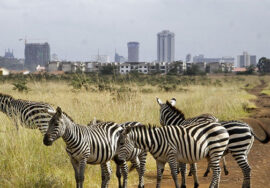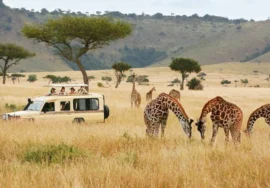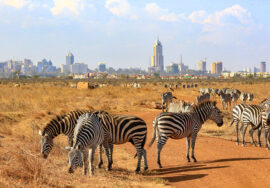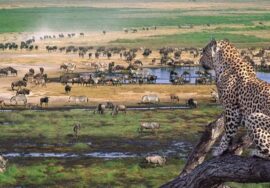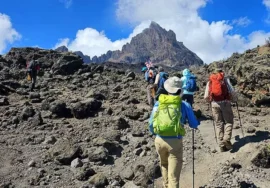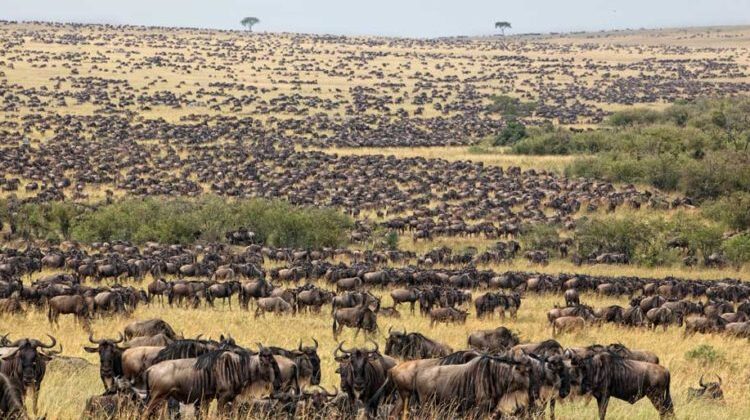
Great Wildebeest Migration Safari Guide
Great Wildebeest Migration Safari Guide, Why should you go on one of our amazing safaris to see the Great Wildebeest Migration? Just because there isn’t anything else like it in the world. A huge group of animals, probably millions of them, walking in a way that has been used for thousands of years to stay alive. These groups of grazers, like wildebeests, zebras, gazelles, and others, are always moving around in search of taller, fresher grasses. This creates a cycle that is as predictable as the seasons.
These huge groups of plains animals leave the calving fields in the southern Serengeti and move clockwise into and through Kenya’s Masai Mara. Later in the year, they cross back into Tanzania. This great circle path is good for everyone: the grazers, the ecosystems they pass through, and the many predators that are waiting for them at every turn.
The whole trip is full of suspense, both because of the huge amounts of wildlife and because birth and death are happening all along the way.
When they are giving birth, up to 500,000 wildebeest babies fall to the Serengeti’s fields. Animals that eat grass, like lions, leopards, cheetahs, jackals, and African wild dogs, are always following the grazers around because it’s in their nature to do so. As nature would have it, not everyone makes it through this eternal trip.
The shockingly large number of people who moved
The number of animals that make up the Great Migration is truly amazing. Up to 1.5 million wildebeests, 500,000 gazelles, 300,000 zebras, and 18,000 eland antelope, along with other species like topi, make up this amazing global march through East Africa.
A large part of this migration path goes from the Serengeti in Tanzania to the Masai Mara in Kenya and back again. It is about 1000 km (620 mi) long, and it is hiked every month of the year. It tests how strong the animals are because the big cats will only eat the biggest ones. It was hard because of the path itself, like crossing dangerous rivers where crocodiles were waiting.
In an interesting turn of events in evolution, each group of grazers eats different parts of the grass they find. Zebras like to eat tall grass, while wildebeests like to eat short grass. It is thought that the spit from these herds helps the grasses grow new leaves, which is an interesting natural relationship.
The animals are drawn to the plains ahead by the rain, and they seem to know immediately that new grasses will come after, making their natural path.
Month by Month During The Great Migration
In the Great Wildebeest Migration, each season serves a different reason, just like in our own lives. Each season has its own special stages, from birth to maturity to the summer when the groups move northward and then back again.
January, February, and March are the months when babies are born.
The migration goes south from the Masai Mara and the northern Serengeti and into the Ngorongoro Conservation Area. The great Ngorongoro Crater is in this area, which is home to the world’s biggest and most intact volcanic caldera. The grasses here are long and fresh after it rains, which attracts wildebeest moms who need the nutrients in the grass to help them grow and then care for their babies.
The herds also gather near Olduvai Gorge, which is home to one of the most important historical sites in the world. Between January and March, about 500,000 wildebeest babies are born in these two areas. During this time, you’ll be in the birthing areas, where every day up to 8,000 calves are born.
As was already said, the drama of all these baby activities is only matched by the number of dangerous animals that are drawn to the site by the thousands of babies. The next thing that happens is that the predators get violent, and the mothers of the wildebeest move to protect their young. In these huge fields, this story plays out a thousand times.
When birds mate: April, May, and June
Wildebeest babies can stand up almost right away, and in just a few days, they can move with the group. If given a month or two to grow up, the groups start to move northwest toward the Serona grasslands, which are in the middle of the Serengeti, in April. A huge group of zebras and cattle follow them as they move.
There isn’t a set route that the migration takes every year; instead, there are rough guidelines that rely on how lush the grass is and how much water is available.
Safari in Tanzania, Africa, during the breeding season of the wildebeest Safaris in Kenya
The long trains of people moving will soon be several kilometers long. You can see the males fighting head-to-head for the chance to mate starting in May, when mating season starts.
Then, the groups head west through the Serengeti, getting close to the Grumeti River for their first crossing. As more and more animals gather at the edge of the river, they are all nervous about the dangers that lie ahead in the unknown water, where crocodiles are waiting.
A huge migration during July, August, and September.
The herds move north, but not all at once. Some went their own way and headed toward the Grumati Reserve. A lot of others keep going to the northern Serengeti and hike toward the Masai Mara in Kenya.
Many thousands of wildebeest and zebras are making their way toward the Mara River by July. This is an even bigger and more dangerous river crossing. As the animals sense the dangers below the water, they become agitated. Some make a huge leap across the river, others miss and are swept away by the current, and still others are crushed by the chaos that is happening at the moment.
One of the most exciting things to see in nature is this meeting. As both grazers and hunters fight for their lives, you’ll see nature at its most raw. During the months when they migrate, about 250,000 wildebeests die, which is about a sixth of the total number. Aside from crossing rivers, people can also die of thirst, hunger, or being too tired to move.
We think these deaths are sad, but they are all part of the natural order. Animals that look for food eat the dead bodies, which also give the environment around them a lot of nutrients.
By late July or early August, most of the group had crossed the Mara and Talek Rivers and was moving through the northern parts of the Masai Mara. Many people who have crossed the rivers are in constant danger because there are so many dangerous animals in the Mara.
By September, there aren’t as many river crossings, and large groups of animals that are moving move east, always in search of new, fresh grasses.
October, November, and December: Crossing Another River
When it starts to rain briefly in October and early November, the herds move south, planning to cross the dangerous Mara River again. They make their way to the eastern edges of the Serengeti, which is famous for having a lot of cheetah sightings.
Finally, in December, the huge groups of animals spread out across the Serengeti’s eastern and southern areas. Because of the short rains, the southern Serengeti is rich with plants from December to January and beyond. This attracts wildebeest, zebra, gazelle, and other grazers as the birthing season approaches.
Soon, these big fields will be filled with huge calves being born by animals that live on the plains and the animals that eat them. You can see bears, zebras, gazelles, monkeys, giraffes, and more as babies. But now is a great time to see cheetah, leopard, and lion babies.
So, the Great Migration continues in a way that hasn’t changed in a very long time. All of nature’s forces are competing, working together, recycling, and making sure that life can survive in this incredibly rich and varied world.

